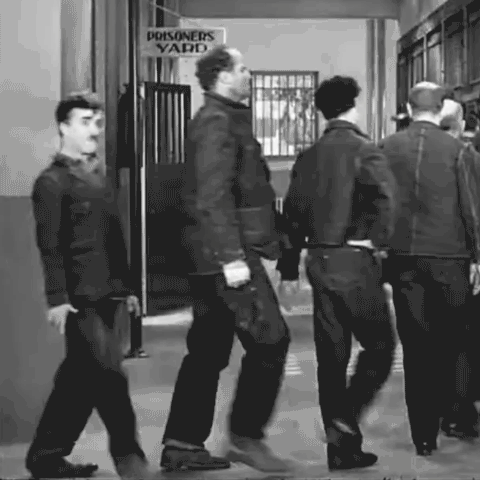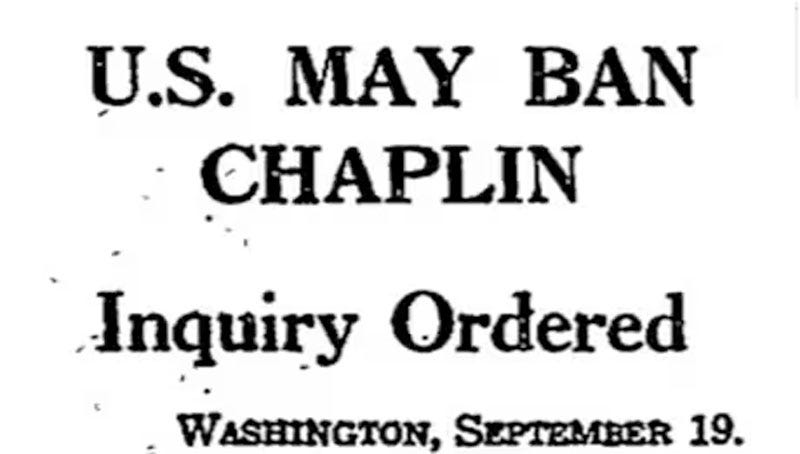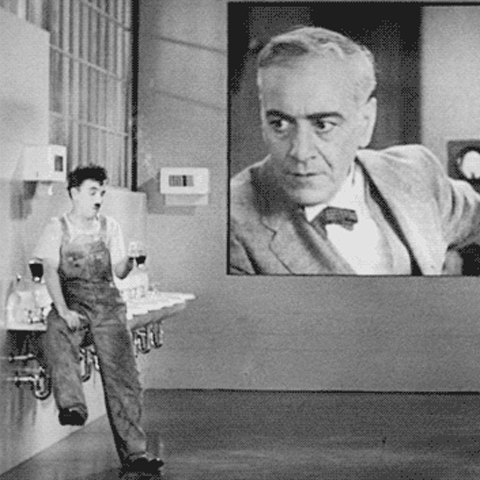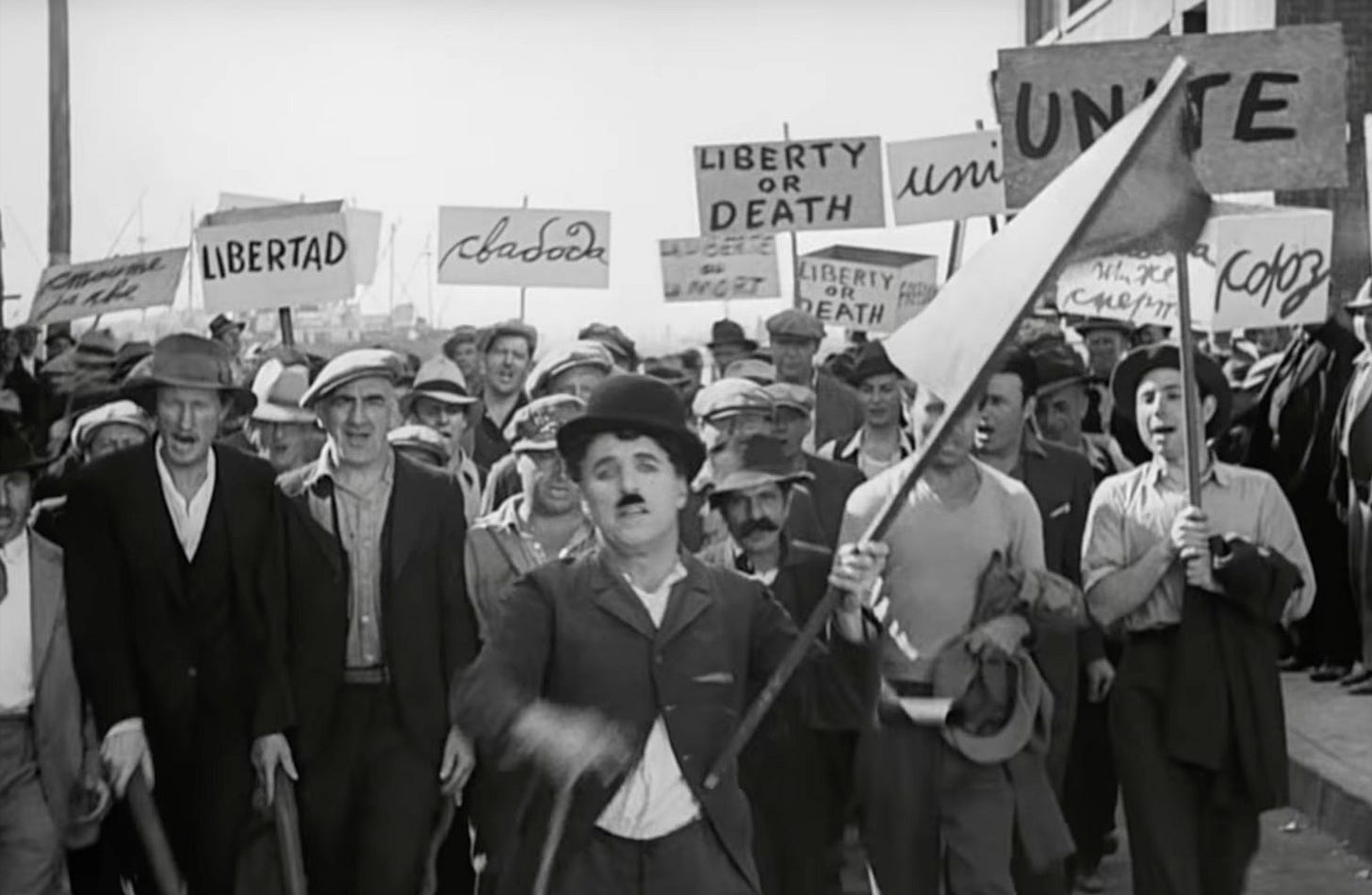GROSS/26 1936 - the tramp has entered the timeline
Modern Times is a humanist work of art - and a breezy comedy of mishaps and workplace brutality
Gross is every year’s top-grossing movie, since 1913, reviewed.
MODERN TIMES, CHARLIE CHAPLIN, UNITED ARTISTS, 1936, 87 MINUTES. CHARLIE CHAPLIN, PAULETTE GODDARD
America rejected Charlie Chaplin and then ejected him. It was easy because he was never actually an American. Once he’d been labelled a Communist it was just a matter of waiting till he left the country and refusing him re-entry. He wasn’t a Communist, of course - he did something much more effective than that. He invented a kind of revolutionary subject - a popular hero who was out of step with the machine age and offered a permanent resistance to its cruelty and irrationality.
It was probably inevitable that a non-compliant outsider - a Walworth kid - like Chaplin would ultimately be expelled. Chaplin’s most famous character was a kind of extended argument with his host nation, which was fast becoming the most advanced economy on earth.
There’s something remarkable about the fact that this oddball movie - a half-silent film in the era of King Kong and the Wizard of Oz and the first big musicals - could have been the top-grossing film of 1936. Ordinary people, as the Great Depression ground on around the world, may have wanted escapist romance, Westerns and monsters but they also still wanted to walk into a cinema and spend 90 minutes with a loveable misfit who couldn’t hold down a job.
Fellow travellers
While all the actual Communists in Hollywood were busy writing all-American characters, often indistinguishable from the gangsters in flannel suits and gunslingers that everyone else was writing, Chaplin was obsessively refining a character so unworldly, so remote from the Hollywood mean, it was inevitable that he’d eventually attract the attention of America’s dangerously paranoid elite. In the 1950s, long after the tramp had been retired, Chaplin’s enemies were still obsessed with him. This tramp was obviously un-American. How could he be otherwise? He didn’t seem to want any of the conventional pleasures of American life.
Chaplin’s tramp - a franchise that did big numbers for over twenty years - never changed and apparently learnt nothing. In Modern Times, which is the tramp’s last appearance, he’s filled out a bit but is no less hypnotically physical, no less charming - his heart still resolutely on his sleeve and his risk-awareness still non-existent.
Chaplin has carried the clown as far as he can - almost a decade into the sound era. Comic characters in the movies have evolved, they’re more worldly everywhere, further from their turn-of-the-century theatrical models. They live in houses and have jobs like everyone else and tell stories about cars and golf clubs and their mothers-in-law.
Clowns
When the tramp arrived he was one of many. An archetype lifted directly from theatre and vaudeville. In the early cinema there were hundreds of clowns - sad, alone, unwitting, disarming - funny in the simplest and most legible ways, and always offering a commentary on human vanity or wickedness. By the time he was finished he stood alone (and stood for the whole category). He was an anachronism, the last clown in the corridors of capitalism.
In the tramp’s pre-history, his first film appearance, in a Mabel Normand short, we’re offered an explanation for the character’s distinctive manner - he’s drunk - and it all makes sense. By the time Chaplin was making his own movies the tramp had cleaned up his act, though - hard to be a universal clown while swigging from a half-bottle of whiskey - but the evolved tramp retained everything precious - the wonky-flywheel movements and the perilous, perpetually-falling-over gait. The tramp seems somehow to always be spinning, even while stationary, gyroscopically filling every space he’s in.
Last clown standing
It was ultimately the blanket of naturalism that smothered so much silent cinema artistry that rendered the tramp an anachronism, really the final anachronism of the early cinema - a silent clown in a talking picture. Production on Modern Times began seven full years after the release of The Jazz Singer, the first talkie. There was nothing old-fashioned about Chaplin’s artistry or his techniques, though.
The list of production innovations in Modern Times is a long one, but the slapstick scenes are like moments of release from the modern - shot at the old silent movie speed of 18 frames per second so, when projected, they had that distinctive frenetic pace that we all know from the silent comedies. Audiences laughed in recognition of something joyful from the old days, before everything turned to shit.
The machines
The vast cogs and wheels and assembly lines of the factory in Modern Times were, for Chaplin, an uncomplicated evil - a reduction of human life to a mechanical routine. His critique of the Fordist factory is direct. In fact it was a visit to a Ford plant in Michigan years earlier that alerted him to the damage being done to workers’ health. The production line in this film is demeaning, exhausting and it definitely damages our hero’s health.
In the factory, which makes something incomprehensible using machinery obviously over-engineered for the job, there’s a splendid caricature CEO (Al Ernest Garcia, a Chaplin regular). He sits at his shiny oak desk, distractedly reading the newspaper and doing a jigsaw. He periodically dials up one of the many two-way cameras in the factory so he can keep an eye on his workers and freak them out by appearing on one of the big screens.
When told via the screen to speed up the line, a shirtless Stakhanov jumps to it, pulling huge, shiny levers and sending the men down the production line into a frenzy. The tramp can’t cope and spins out, leaving the line with his head reeling and setting off a sequence of events that ultimately see him in jail. At one point he literally passes through the great machine, crushed between the gears like a leaf. It leaves him disoriented, traumatised - and the whole story follows from this workplace injury.
The workers
Chaplin doesn’t have a political bone in his body. He has enormous influence but his engagement with politics really isn’t much different from the hand-wringing and statement-making of the contemporary Hollywood elite. Chaplin is a humanist and a kid from a poor neighbourhood of South London who knew and understood working people. His connections with world leaders and intellectuals must have been influential, though - you don’t hang out with Mahatma Gandhi and Albert Einstein without something rubbing off. But Google away, you’ll find no evidence anywhere for Chaplin’s involvement in workers’ politics or even in campaigning for change. He never joined the party - or any party.
In Modern Times, when the tramp winds up in prison, it’s because he’s been mistaken for a Communist agitator - but he is, of course, blissfully unaware - it’s just a device to get him into the next situation. There’s a strike, an angry factory-gate rally, some argy-bargy. A striker is shot and killed outside the plant. In one scene we see placards with a kind of pick-and-mix of world causes - ‘libertad’, ‘свобода’ (‘freedom’ in Russian), ‘unite’, ‘liberty or death’ (in several languages). It’s oddly moving in a universal brotherhood kind of way but also obviously a bit random. Indeterminate workers in an unspecified city promote a vaguely internationalist cause outside their undefined workplace.
These scenes are lifted whole from newspaper front pages all over America. More than twenty workers had been killed by police and often by private security guards in the year running up to the film’s release. Nothing vague about this routine violence against workers - perpetrated by an alliance of capital and state at its most brutal. Chaplin’s not doing much more than reflecting the day-to-day reality here. And the violence is no more or less consequential than any of the movie’s other big events - the prison break that the tramp accidentally foils (apparently because he’s on coke), for instance.
Modern Times is unarguably a great film. I went into this viewing - my second in about forty years - with a kind of shallow expectation that I’d find it was really something bogus or superficial - phony-baloney sympathy for the masses from an entertainer who was already a millionaire many times over. But I did not. I’m left with questions, though, as you will be when you watch it.
How to understand a movie that is, at once, one of the most powerful humanist statements in Western art and a breezy entertainment that apparently can’t even take the murder of a working man seriously? How to resolve the paradox of Chaplin, a lover of peace and freedom and of ordinary humanity who lived the life of a remote, global plutocrat, so unanchored from reality that even being deported from his adopted home and his primary market couldn’t really touch him? How to explain the persistence of the tramp - his profile, his gait, his reliable pathos - into the present day, decades beyond the shelf life of every other silent comic and every other McCarthy-era cause célèbre?
I found the film on Apple TV+ and there’s a Criterion Blu-Ray, with a bunch of extras.
I left Paulette Goddard’s character ‘The Gamin’ out of this review. I mean if I’d tried to include her it would have been twice as long. Here’s a supplemental post about her. She’s vital to the movie. An equal partner to the tramp and a woman whose agency and energy animate the film almost as much as Chaplin’s.
You can tell Chaplin was a big deal because everyone still keeps a close eye on his descendents. They’ve become a kind of global influencer tribe. I don’t really know what we expect of them but this happens occasionally with great men. Something about seigneurage - see also Picasso.
Incidentally in Modern Times there’s one of the most potent depression-era fantasies - the ‘big store at night fantasy’. For a generation deprived of so much, department store movies were pure escapism - the idea of being locked into a giant store overnight with no supervision is irresistible.
The story of Chaplin’s persecution by Hoover’s FBI, the witless legislators he controlled and the emerging national security state is astonishing and enlightening.
Chaplin must have had the only surviving speedball artist on a retainer for this movie - there are many intertitle cards in the silent style.
Mabel Normand ought to have been the female Chaplin. She had the talent and the physicality and, like Chaplin, she was a successful director and producer in her early career, but her life was derailed by the Babylon aspect of early Hollywood and then by illness. She was dead six years before Modern Times was released. I wrote about her wonderful 1918 film Mickey.
René Claire’s 1931 film À Nous la Liberté has a production line scene that’s remarkably like Chaplin’s in Modern Times. Claire’s studio sued Chaplin - twice - for plagiarism but Claire himself wouldn’t join the suit. He said that he’d taken enough from Chaplin’s films himself and: “I was asked to take part in the suit and I always refused. I said I know that Chaplin has seen À Nous la Liberté. It is enough to look at his film.”
Here's a list of all the top-grossing films since 1913 and here's my Letterboxd list and another top-grossing list.






